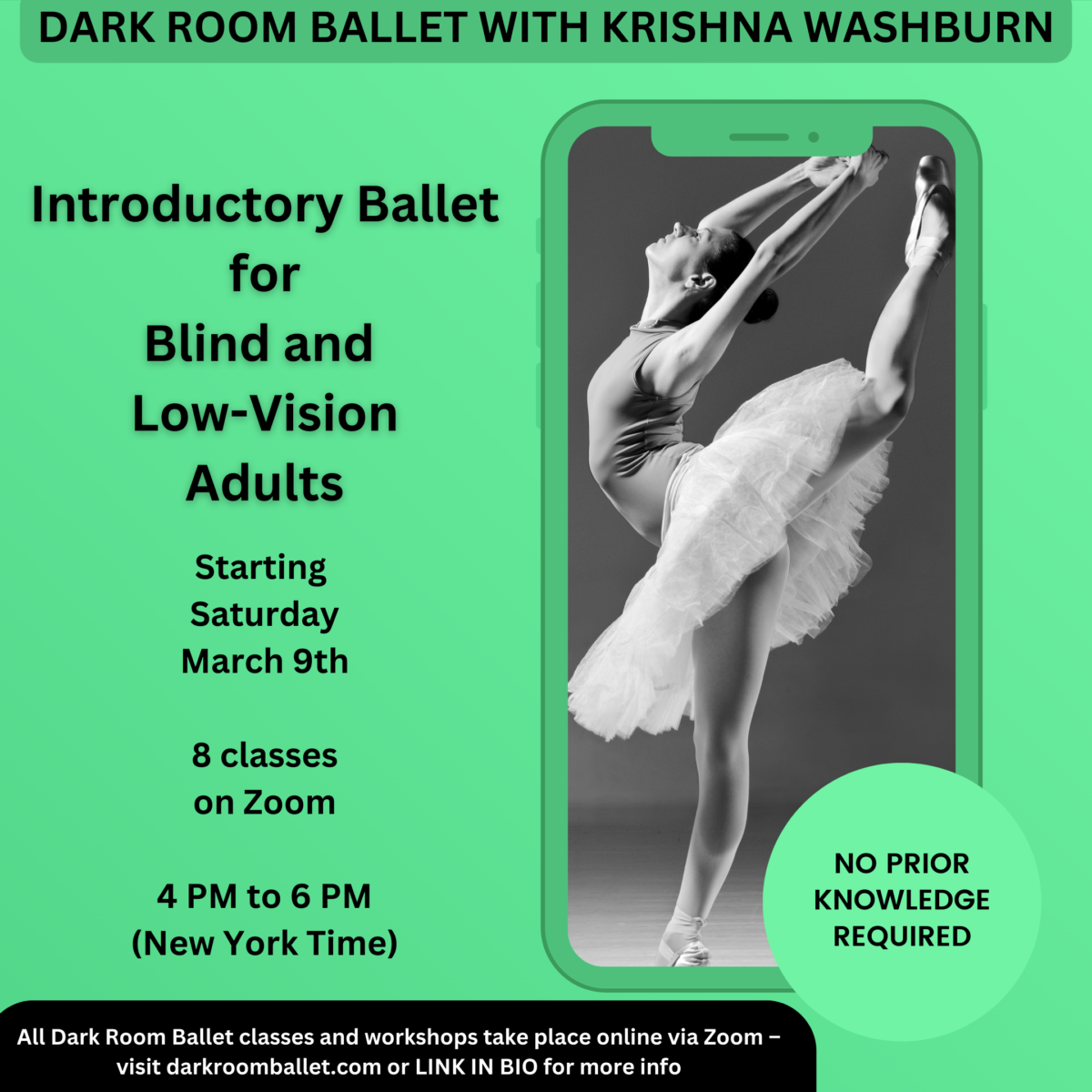This series of five online workshops covers a variety of topics related to audio description for dance, and are designed not only as professional development for audio describers, but also as essential education for blind and visually impaired audiences, choreographers, dancers, movement educators, and administrators for arts presenting organizations.
All workshops take place online via Zoom.
To register for any or all workshops, please write to info@darkroomballet.com as soon as possible to complete the registration process.
Saturday, April 12, 2025:
How to Hire and Collaborate with a Professional Audio Describer (NEW!)
This workshop is designed to help prepare choreographers and arts administrators to effectively collaborate with a professional audio describer, ideally to integrate the audio describer as a full member of the production team. Audio describers will learn about their rights as professionals, the role of blind audio description consultants will be discussed, and models will be shared demonstrating how true artistic excellence can be achieved when all parties involved in the audio description process understand their role and purpose.
Saturday, April 19, 2025:
Body Language, Movement Shorthand, and Mime for Blind Audiences
Although there are common cultural assumptions about popular body language and movement shorthand, it’s important to remember that they are all learned and not universally known! We’re going to break down some body language assumptions, find ways to integrate effective audio description, and explore the wonderfully hilarious world of mime and exaggerated body language.
Saturday, April 26, 2025:
Experimentation in Vocal Tonality for Audio Description for Dance
Most audio description used to support television and film is recorded with a neutral tone of voice. However, we here in the Dark Room propose that dance is a very different art form that deserves a different approach to audio description. Be ready to listen to some interesting examples of audio description, practice using the voice expressively, and pair sound and movement together in artistically effective ways.
Saturday, May 3, 2025:
Yeah, But Was It Good? Learning How to Listen to Audio Description for Dance Critically
Audio description for dance performances is still very rare, but that doesn’t mean that blind and visually impaired audiences should be satisfied when the audio description on offer is of low quality. Students are going to get to listen to many, many examples of audio description for dance, and talk about what works and what doesn’t work, and what we might change in order to improve it.
Saturday, May 10, 2025:
How to Watch Dance 2: an Audio Description Workshop for Audio Describers and Blind Audiences
The second of the Dark Room’s “watch party” workshops (How to Watch Dance 1 took place in November 2024), as a community, we will research an audio described dance performance video, set our expectations and make predictions, watch a full-length performance together, and then share our critique of the audio description and the performance. We had a blast back in November watching The View from Here by Zaccho Dance Theatre; come and hone your critical listening skills!
On a dark background sprinkled with small illustrated stars, people appear at the bottom with different body types, dressed in colorful casual clothing while they move and dance.
Contrasting white and cream-colored text above reads:
DARK ROOM BALLET WITH KRISHNA WASHBURN
Audio Description for Dance
A SERIES OF 5 VIRTUAL WORKSHOPS
SATURDAYS FROM APRIL 12 TO MAY 10, 2025
ON ZOOM FROM 4 PM TO 6 PM (EASTERN/NEW YORK TIME)
MORE INFO/REGISTER AT LINK
or visit DarkRoomBallet.com







